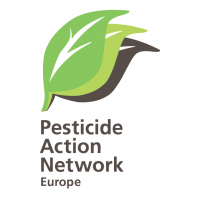EU officials have approved the use of over 100 pesticides since 2011, typically giving them 10-year licenses, without testing their impact on the hormonal system of humans, despite a requirement to do so.
This willful attack on citizens’ health has been exposed by a new report from the Pesticide Action Network Europe (PAN). The report reviewed a sample of 33 pesticides approved by the EU, and found that 31 were granted a license without any scientific test to check if they caused harm to the human endocrine (hormonal) system.
Since 2009, the EU has been the only market in the world that bans pesticides that cause endocrine disruption (Pesticide Regulation 2009, came into force 2011). These chemicals (so called EDs), which interfere with the body’s normal hormonal messages that regulate the way it functions, can cause a wide range of diseases including breast cancer, prostate cancer, diabetes, and can have serious developmental effects on the nervous system of children. Indeed, research shows that humans are particularly sensitive to endocrine disruptors during the early life stages, making pregnant women, infants and children the most vulnerable.
Since the regulation was passed in 2009, endocrine disrupting pesticides have been banned in the EU. And whilst there weren’t agreed upon measures for assessing this risk in 2009, in 2012 the OECD agreed a set of scientific tests which the EU should have been using. Furthermore, in June 2018, the EU adopted new guidelines (page 32) that explicitly set out all the information needed in order for the Commission to reach a judgment on whether a pesticide is an endocrine disruptor, or if it is safe to use. This new report by the Pesticide Action Network Europe (PAN) shows that in the vast majority of cases it reviewed, the Commission ignored these rules. Instead of testing pesticides as it is required to, the Commission simply asked manufacturers to provide “information” about their pesticide. In 12 of the cases reviewed, this was to be submitted only after approval was granted. Even more worrying, in 10 of these cases, the manufacturers did not even bother to submit the information required, let alone ED-specific tests. Yet their pesticide was still approved for use in the EU.
In approving new pesticides, DG SANTE is required to consider evidence from the Joint Research Council (EU-JRC). Today’s new research by PAN Europe has found that 7 of the 33 pesticides sampled had already been identified as endocrine disruptors by the EU’s JRC methodology in 2016. Yet DG SANTE decided to approve them despite evidence they are harmful to human health (see notes).
These findings provide further evidence of a concerted effort led by the Commission’s DG SANTE, Secretariat-General and certain Member States, to continue allowing harmful pesticides in the EU. As early as 2013, the Secretariat-General removed DG ENV from its role setting the criteria for identifying endocrine disrupting pesticides, replacing it with the industry friendly DG SANTE. In May 2019, The European Court of Justice ordered the release of internal documents that showed a years-long battle, as outnumbered research department officials were overruled by agriculture, enterprise and industry officials who succeeded in watering down the testing criteria for endocrine disrupting pesticides.
During this time, the Commission continued its fight to redefine the criteria for approving pesticides, and established a much higher requirement for health officials to prove that a pesticide caused endocrine disruption. They even included non-scientific factors, such as a consideration of farming profitability.
Today’s report by the Pesticide Action Network Europe (PAN) proves the Commission is not even properly implementing its own rules and guidelines when deciding whether pesticides should be approved in the EU.
PAN Europe chemicals policy co-ordinator Hans Muilerman said: “The Commission’s actions over a number of years suggest their priority is to limit the cost to industry, and to reduce barriers to future trade with other countries, whilst exposing citizens to the potentially life-threatening effects of dangerous pesticides. The EU is meant to be leading the way in the banning of endocrine disrupting pesticides, which we know cause life threatening diseases. Yet the Commission has consistently tried to weaken regulation of these hormone disrupting pesticides. It is a move that only benefits industry, whilst these harmful chemicals continue to be sprayed on open fields and end up as residue on our food.”
Contacts: Hans Muilerman, +31 655 807 255, hans [at] pan-europe.info
Notes to the editor:
- The EU has approved 188 pesticides since June 2011 (according to the European Commission’s database), which is when the new pesticide Regulation that calls to ban pesticides that are endocrine disruptors entered into force.This report by PAN analysed the testing requirement on 33 approvals under the new Regulation. The results of this survey are set out in today’s report.}
- In 31 of the 33 cases, no relevant scientific tests were conducted to assess the impact of the pesticide on the human endocrine system, despite OECD tests being available.
- 7 of the 33 pesticides sampled in this report were found to be endocrine disruptors (EDs) by the EU’s JRC methodology in 2016. Despite this evidence, they were either dismissed by Commission from being EDs (the pesticides Pendimethalin, Propyzamide, L-cyhalothrin), or approved for another 10 years with a simple request that additional “information” be provided by their manufacturer (the pesticides Epoxiconazole, Prochloraz, 2,4-D, Tetraconazole). The additional information provided was either inconclusive (epoxiconazole, tetraconazole), not submitted (prochloraz) or is still ongoing (2,4-D).
- Worryingly, where animal tests showed pesticides had potential endocrine disrupting properties, the European Food Standards Agency (EFSA), Commission and Member States downplayed these effects. For example, they noted the “indirect effect” (of the pesticide Fluopyram), or that the effect was “only at high dose” (for the pesticide 2,4-D, Flurochloridon. And yet still approved these without industry conducting further tests.
